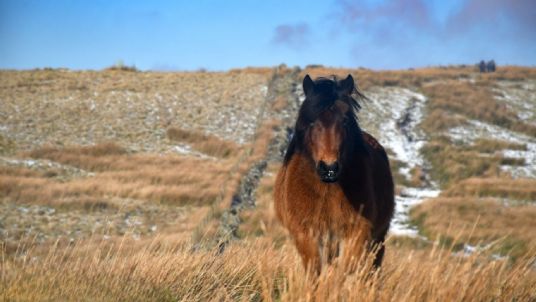Managing Laminitis
09 June 2023
There has been a huge increase in laminitis cases in the UK and our Feed Line is busy with calls from concerned owners. UK grass growth is significantly above average. Be aware of the high risk of laminitis this year, even if your horse has no history of laminitis or is not a ‘typical candidate’.
Laminitis can be controlled by addressing any underlying causes with the help of your vet. Preventing and managing horses or ponies with laminitis is very often also a case of managing their weight. This is so much more than just putting the horse on a strict, low calorie diet. Very strict diets can increase the risk of ulcers, colic, be very stressful for the horse and can lead to malnutrition.
It makes sense to use lower calorie feeds, so the horse is filled up with bulk and the guts work properly without adding to your horse’s waistline. However, we don’t think feeding straw is a good idea. Straw is not very absorbent, so carries less water with it and can lead to impaction. Straw irritates the gut, is associated with ulcers, is very poor nutrition and has been subject to a lot of agrochemical applications. Low calorie forage feeds such as Organic Lucie Stalks, Timothy Chop and Lucie Fibre Cubes are ideal.
For weight loss, not only is it necessary to reduce calories going in but you can also increase calories going out. Exercise intensity, duration or frequency can be increased if your horse is sound and comfortable doing so. If this is not an option, there are other strategies we can adopt to increase natural exercise and increase the metabolic rate.
Our top tips are:
1) No treats, fruit or vegetables – cut out all sugary and starchy feeds and only feed a low calorie, high fibre forage diet.
2) No rugging - rugs keep calories in!
3) In warmer months, wash with cold water and leave to dry naturally, especially after exercise.
4) Track systems in paddocks will increase natural exercise, or long narrow strips are better than square pens. Divide food and hay piles into several locations to keep your horse moving.
5) Provide Environmental Enrichment (feed balls, scratching posts, forage blocks, stable mirrors, Salt Lick Tub) to give your horse other things to do that just eat. Company is really important for social interaction, playing and mutual grooming.
6) Frequent exercise is ideal if your horse is sound and comfortable. Walking in-hand, lunging and long-reining are all good ways to get more exercise if you are unable to ride.
7) Analyse your hay and, if necessary, soak for 1 hour to reduce sugar levels. Soaking for long periods can lead to fermentation, strip out vital nutrition and increase acid-producing bacteria. You can order a hay analysis kit here.
8) Feed MetaSlim – our forage balancer specifically designed for those challenged by weight or metabolic issues – for additional support.
If you suspect laminitis, call your vet immediately.
For feeding advice, please contact our Feed Line on 01728 604 008 or info@simplesystem.co.uk who will be happy to help. Alternatively complete our online form for a tailored feed plan for your horse here.



